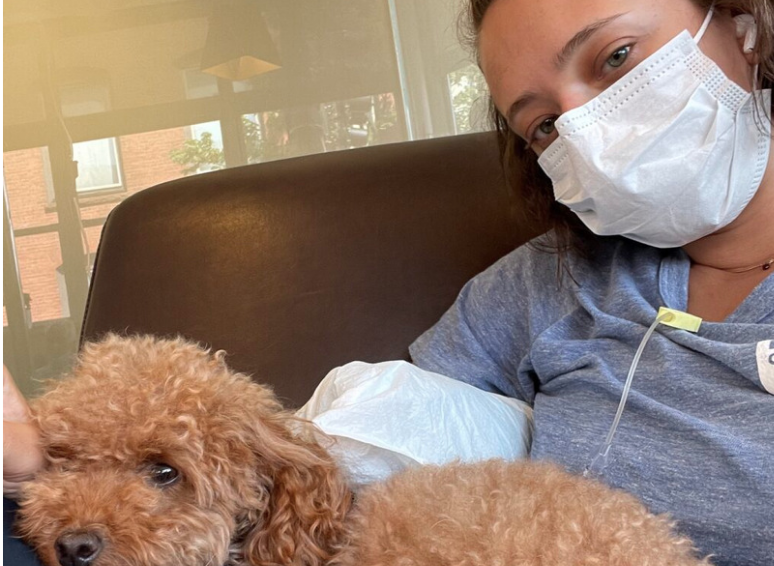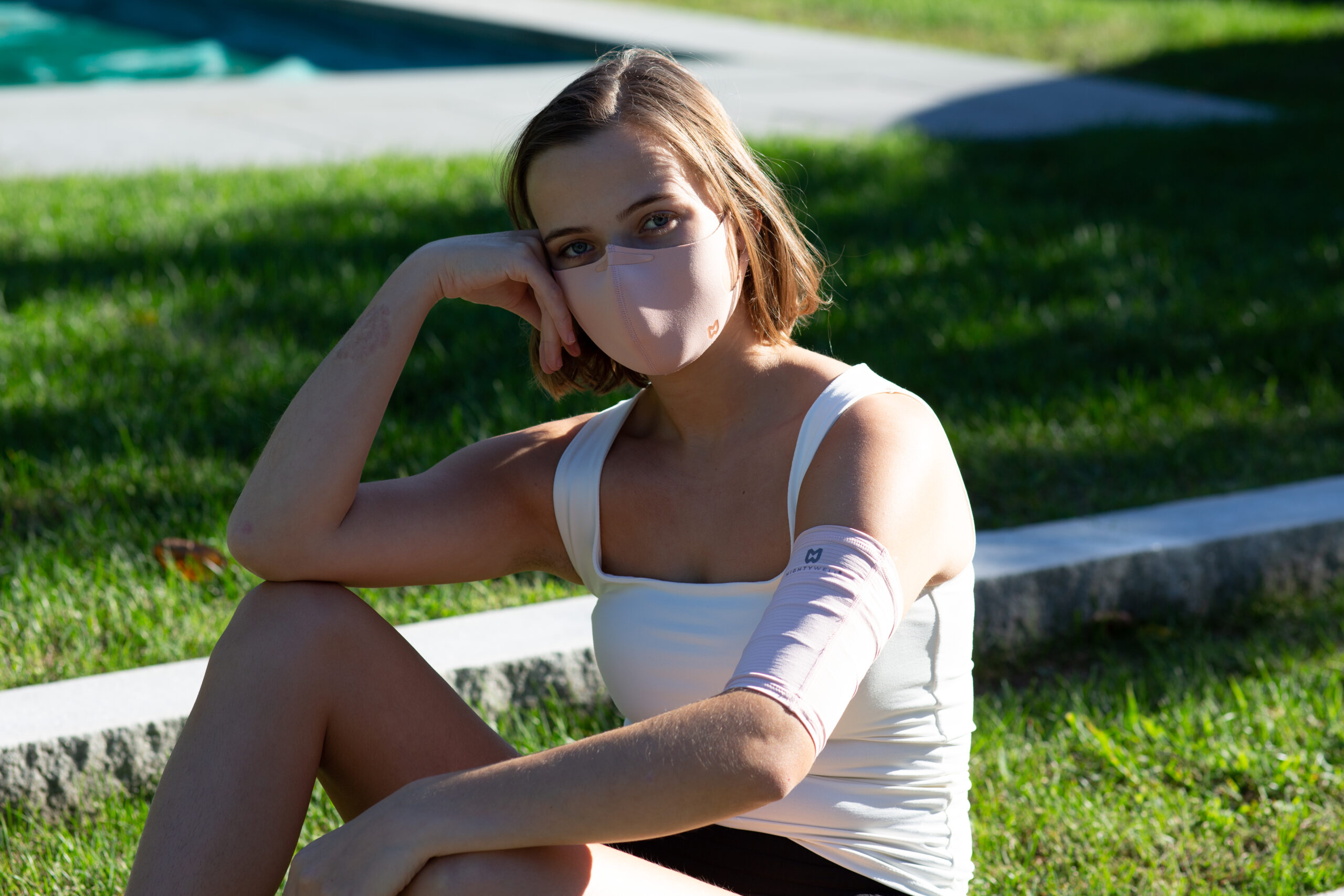Getting a PICC line (Peripherally Inserted Central Catheter) means opening yourself up to new treatment options and healing! It can also feel scary. Patients often ask us if PICC lines will hurt and, if so, how to best reduce the pain. The answer is complicated. Everyone is different, and every PICC placement is different. Depending on how the procedure goes, how healthy you are when it is placed, and how well you take care of your line… hopefully, you will have no PICC line pain at all, other than the initial needle prick! If you do find yourself in pain, there’s no need to panic — it may be perfectly normal and short-lived. We’ll help you navigate the different types of pain and share some tips we’ve found for making it feel better. Please remember, however, that we are not medical professionals, and you should always call your doctor if concerned.
1. Swelling or soreness
As the numbing medications wear off from your procedure, your arm will likely feel sore and swollen. This tenderness can last a few days, and the swelling even longer. The best way to manage this discomfort is rest, so do your best to ask for help and take it easy! If you can, schedule in a few days off to just take care of yourself and not overdo it. You can also talk to your providers about ice packs, heating pads, and pain medications. Always remember, however, that your insertion site must stay sterile, so be sure to place a clean cloth or antimicrobial PICC Line Cover in between the ice pack and your arm.
2. Sensitive skin
Another common PICC line pain is sensitive skin. Between the incision, adhesives, and constant dressing changes, your skin has to go through a lot! You may experience itching, blistering, or burning sensations, especially during dressing changes and if you have a history of allergies. Ask your medical staff what products they are using. You may find some adhesives and dressings less irritating than others. For example, many patients find silicone dressings most comfortable. Ask to try other options until you find a good fit. If your skin won’t tolerate any of the adhesives you’ve tried, you can use a dry dressing — one without any adhesive! You can also use a PICC Line Cover as a barrier to keep your sensitive skin protected. Mighty Well’s PICCPerfect® PICC Line Cover uses ultrasoft fabric in a two-layer design specifically for this purpose.
Check out our patient tips on which dressing products to try and reviews of the PICCPerfect® for sensitive skin.
3. Complications to watch out for
While some PICC line pains may be normal and expected, you should always let your medical staff know if a new pain shows up. PICC lines can have dangerous complications that are best dealt with right away.
One such complication is infection. Your catheter site gives germs access into your body, so it’s crucial to keep the area clean and dry! Make sure that everyone on your team uses proper hand hygiene and only touches the area when necessary. Redness, pain, or swelling near the catheter site — or tenderness along the path of the catheter — could be symptoms of a local infection. Call your doctor right away if you are concerned about an infection.
Your PICC line can also become dislodged. This complication is common, and your care team should be checking for this each time they change your dressings. The best way to avoid dislodgement is to avoid activities that put stress on your arm. Exercise is important, but stay away from anything that involves moving your arms a lot or lifting heavy objects. Also, avoid carrying heavy backpacks as much as possible.
If air gets into your PICC line, this can cause an air embolism. This can feel like a sudden onset of breathlessness, nausea, and shoulder or chest pain. Call your doctor right away if you feel these symptoms. Thankfully, it is easy to avoid getting air into your PICC line! Simply keep the cap closed whenever you’re not receiving infusions.
Finally, blood clots can form in your vein, causing a complication called thrombosis. While this may sound scary, it is actually easy to treat from home using warm compresses and over-the-counter medications like Ibuprofen. It is important to catch it early before the clot moves, so call your doctor right away if you notice swelling, redness, and tenderness by the catheter site. To prevent blood clots, simply keep things circulating! Get up and move around if you’ve been sitting for a while, and be sure to drink plenty of fluids.
Check out our tips for avoiding complications and how to safely shower with a PICC line.

4. Pain management in general
Whether your pains are directly related to your PICC line or in an entirely different part of your body, there is more you can do to get comfortable! Research shows that relaxation techniques such as meditation or breathing exercises can reduce overall pain. Addressing stress through exercise, counseling, or other forms of stress management can also provide pain relief. Both of these approaches can also help improve your sleep! Sleeping better (a challenge when in pain) is also proven to lower your body’s sensitivity to pain, bringing you more comfortable days.
For more information on caring for your PICC, watch the video below:


4 Responses
This is all great advice, I just received a picc line and am having a hard adjusting. I found your article and it gave me hope.
I’m so glad we could provide some hope! In case it helps, we’ve recently put up a very thorough PICC line guide: https://mighty-well.com/pages/picc-line-care-tips-guide-safety-and-covers Good luck with your PICC journey <3
Hi Wendy, if you had the choice to continue with your peripheral IV as opposed to getting the PICC line, which would you have chosen?
A PICC was the best option for me!